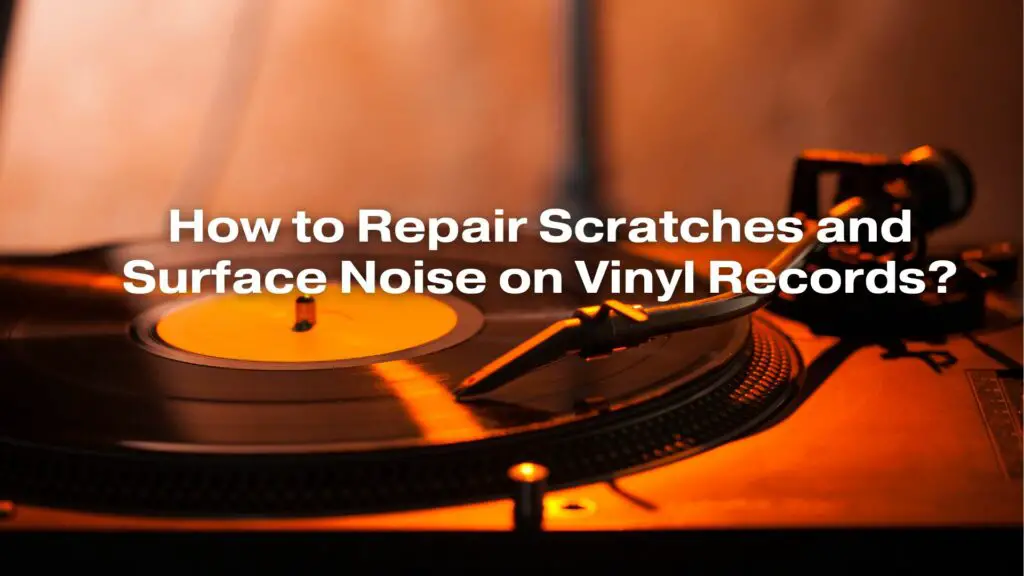Repairing scratches and reducing surface noise on vinyl records can help improve the sound quality of your cherished albums. While it’s essential to note that extensive or deep scratches may be difficult to repair entirely, you can take several steps to minimize their impact and enjoy better playback quality. Here’s a guide on how to repair scratches and surface noise on vinyl records:
Materials You’ll Need:
- Clean, lint-free cloth: For cleaning records before and after repairs.
- Record cleaning solution: A solution designed for vinyl record cleaning.
- Soft brush: Used to remove loose dust and debris.
- Anti-static brush: For reducing static buildup.
- Repair kit: A commercial vinyl repair kit with a fine stylus or needle.
- Vinyl brush or cleaning machine: For routine maintenance.
- Playback equipment: A clean turntable, cartridge, and stylus for assessing results.
Step-by-Step Guide:
1. Clean the Record:
- Start by cleaning the vinyl record to remove loose dust and debris. Gently brush the record’s surface with a soft brush, and use a record cleaning solution to remove stubborn dirt and grime. Clean the record using a circular motion from the center to the outer edge, and allow it to dry completely.
2. Examine the Damage:
- Inspect the record under good lighting to identify the location and severity of scratches. Note that deep or extensive scratches may not be repairable.
3. Repair with a Commercial Kit:
- If the scratches are light and shallow, you can use a commercial vinyl record repair kit. Follow the instructions provided in the kit, which typically include applying a repair solution to the affected area and using a fine stylus or needle to work the solution into the scratches. This process can fill in and minimize the appearance of the scratches.
4. Test Playback:
- Play the repaired record on your turntable to assess the effectiveness of the repair. Listen for any improvements in sound quality, such as a reduction in pops or clicks. If the improvement is satisfactory, you’re done. If not, you can attempt additional repairs.
5. Reducing Surface Noise:
- To reduce surface noise during playback, ensure your stylus and cartridge are in good condition and properly aligned. Clean your records regularly with a brush or cleaning machine to minimize dust and debris. Using an anti-static brush before each play can help reduce static-related noise.
6. Professional Restoration:
- For valuable or rare records, consider professional restoration services offered by audio restoration specialists. These experts have access to advanced equipment and techniques for repairing damaged records.
Prevention is Key:
- The best way to maintain your vinyl records is to prevent scratches and surface noise in the first place. Handle records with clean hands, store them in protective sleeves, and use a quality turntable and stylus. Proper care and maintenance can go a long way in preserving your vinyl collection.
It’s important to exercise caution when attempting DIY repairs, as excessive or improper efforts can further damage your records. Always start with a gentle approach and consult professionals if you’re dealing with valuable or rare records. Remember that while you can reduce surface noise and improve the sound quality of scratched records, the degree of success may vary depending on the extent of the damage.


